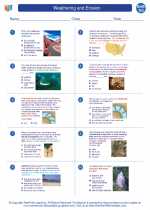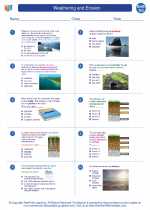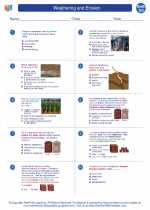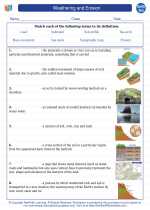Paleoclimatology
Paleoclimatology is the study of past climates and the processes that led to them. It involves the reconstruction of ancient climates and the investigation of the causes of past climate changes. Paleoclimatologists use a variety of methods to study ancient climates, including analyzing ice cores, sediment cores, tree rings, and other natural records of past climate conditions.
Methods of Paleoclimatology
There are several methods that paleoclimatologists use to study past climates:
- Ice Cores: Ice cores are drilled from glaciers and ice sheets and contain layers that provide information about past temperatures, atmospheric composition, and other climate indicators.
- Sediment Cores: Sediment cores from lakes, oceans, and other bodies of water contain evidence of past climate conditions, such as pollen, isotopes, and other markers of climate change.
- Tree Rings: Tree rings can provide information about past climate conditions, including precipitation, temperature, and other environmental factors.
- Fossil Records: Fossils of plants and animals can provide clues about past climates and ecosystems.
Causes of Past Climate Change
Paleoclimatologists study the causes of past climate changes, including natural factors such as volcanic activity, variations in Earth's orbit, and solar radiation, as well as human-induced factors such as deforestation, greenhouse gas emissions, and land use changes.
Importance of Paleoclimatology
Studying past climates is important for understanding the natural variability of Earth's climate system and for predicting future climate changes. By reconstructing past climates, paleoclimatologists can improve our understanding of climate dynamics and how the Earth's climate system responds to various influences.
Study Guide
If you're studying paleoclimatology, here are some key concepts to focus on:
- Methods used in paleoclimatology, such as ice cores, sediment cores, tree rings, and fossil records.
- The causes of past climate changes, including natural and human-induced factors.
- The importance of paleoclimatology for understanding Earth's climate system and predicting future climate changes.
- Examples of how paleoclimatology has contributed to our understanding of past climate conditions and their impacts on ecosystems and human societies.
Remember to review the specific methods and case studies used in paleoclimatology to gain a comprehensive understanding of this field of study.
.◂Earth Science Worksheets and Study Guides High School. Weathering and Erosion

 Worksheet/Answer key
Worksheet/Answer key
 Worksheet/Answer key
Worksheet/Answer key
 Vocabulary/Answer key
Vocabulary/Answer key
 Vocabulary/Answer key
Vocabulary/Answer key
 Vocabulary/Answer key
Vocabulary/Answer key
